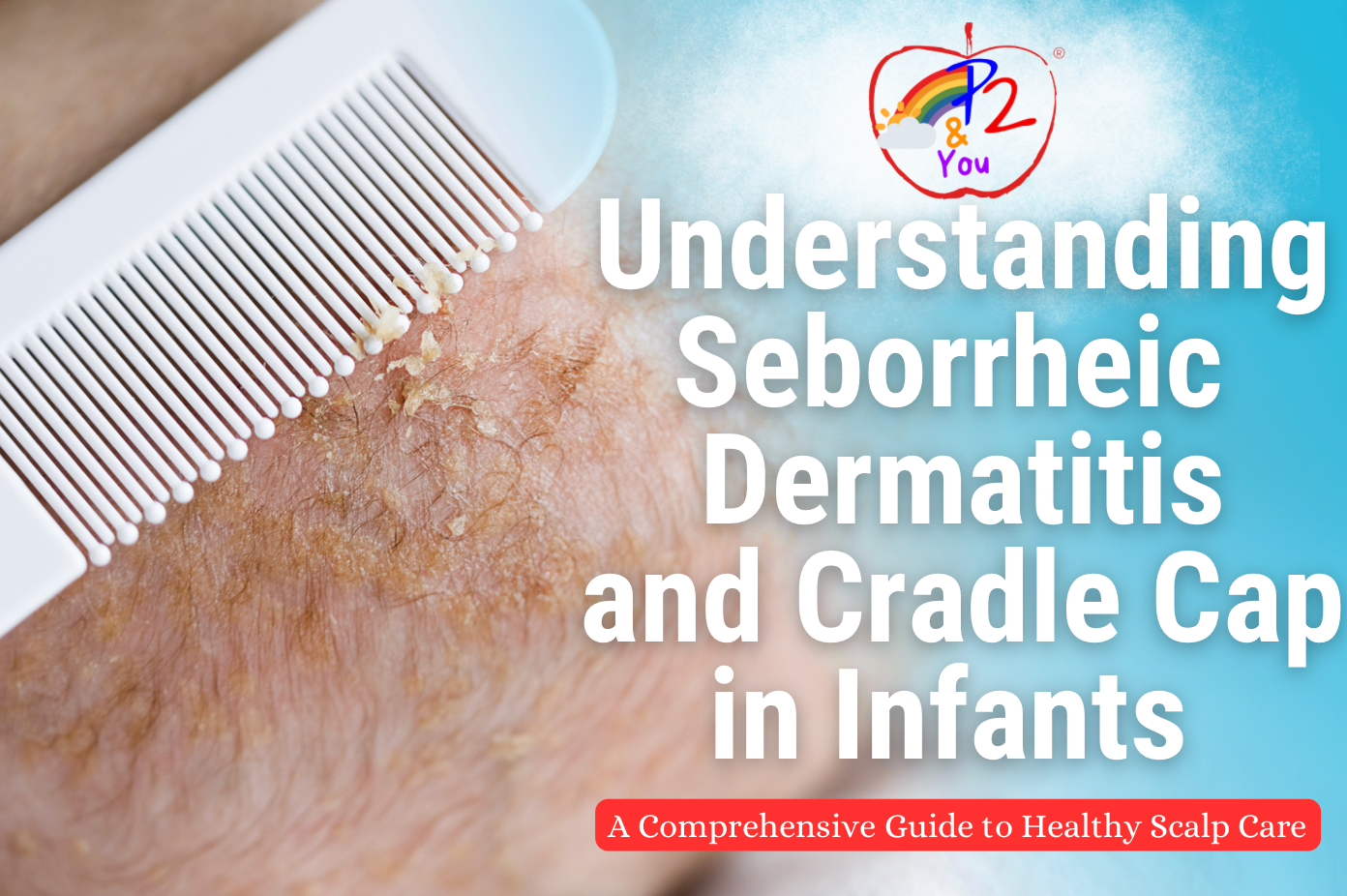
Understanding Seborrheic Dermatitis and Cradle Cap in Infants
DISCLAIMER: The information presented here is based on general knowledge and research up to the knowledge cutoff date in January 2024. Medical knowledge is constantly evolving, and new research may impact the understanding of certain conditions. The information provided in this content is for general informational purposes only and is not intended to be a substitute for professional medical advice, diagnosis, or treatment. Always seek the advice of your physician/pediatrician or other qualified health provider with any questions you may have regarding any medical condition.
*********************************************************************************************************
Seborrheic dermatitis and Cradle Cap are common skin conditions that can affect both adults and infants. While they may look similar, it is especially important to understand the differences between the two as this will help guide you to the appropriate management techniques. For this month's blog, we will explore what infantile seborrheic dermatitis and cradle cap are, their causes, symptoms, and treatment options.
What is Seborrheic Dermatitis?
Seborrheic dermatitis is a chronic inflammatory skin condition that mostly affects young adults (1). It typically occurs in areas with hair, where skin rubs together and other parts of the body with a high density of sebaceous (oil) glands, such as the scalp, face, and chest and is usually identifiable by symptoms like red, scaly patches that may be itchy or uncomfortable (2).
What is Cradle Cap?
"Cradle cap" is also known as 'infantile seborrheic dermatitis' and is a common condition that affects newborns and infants (2). It is characterized by symptoms like thick, yellowish or brownish scales on the scalp and is commonly referred to as 'cradle cap', because the hard scaly patches can become thickened, resembling a cap (2).
While it is important to know that cradle cap is not contagious, it is equally important to acknowledge that can be quite unsightly and this will usually be of a bother to the parents more so than it is irritating for the child (2).
This common condition occurs across the globe and affects all ethnic groups. It is usually observed in the first three months of life and more broadly in children under one year old. However, children over the age of one year can also be affected (2).
Is Seborrheic Dermatitis the Same as Eczema?
The short answer to this question is yes! Seborrheic dermatitis is considered to be a chronic form of eczema (3). It is important to note that these conditions have different causes and therefore may require different approaches to treatment.
Causes of Seborrheic Dermatitis and Cradle Cap
Although the exact causes of seborrheic dermatitis and cradle cap are not fully understood, there are several schools of thought that may play a role in their development (2). These include:
- Overactive sebaceous glands (1,2)
- the presence of fatty acids (1,2)
- Malassezia, a type of yeast that naturally resides on the skin (1,2)
- Hormonal changes in the mother during pregnancy, which can affect the baby's skin (1)
- Environmental factors, such as cold weather or dry air (1,2)
Treatment Options
Both seborrheic dermatitis and cradle cap can usually be managed with simple measures.
For adult patients with Seborrheic Dermatitis, table I (1) shows recommended topical prescriptions that you may inquire about with your primary care physician.

Dall’Oglio, F., Nasca, M. R., Gerbino, C., & Micali, G. (2022). An overview of the diagnosis and management of seborrheic dermatitis. Clinical, Cosmetic and Investigational Dermatology, 1537-1548.
In little ones ages 0-24 months, topical antifungals and/or shampoos may be a possible treament option. We recommend following up with your little one's pediatrician/family physician for more details about this to see if it is a good option for your family.
Generally, the mainstay treatments of cradle cap include the use of baby shampoos enriched with emollient agents (ie, shea butter, glycerin) and vegetable oils (ie, olive oil, borage oil, almond oil), followed by gentle mechanical removal of loosened scales (1). We highly recommend our Cradle Cap Care Set !
Here are some generalized recommendations for use:
- Apply a moisturizer or baby oil to the affected areas to soften the scales
- Gently brushing the scalp with a soft brush/plastic comb to remove scales
- Gently washing the affected areas with a mild, fragrance-free shampoo
- Avoiding harsh soaps, shampoos, or other skincare products that may irritate the skin
If the symptoms persist or worsen, it is recommended to consult a healthcare professional for further evaluation and guidance.
Understanding seborrheic dermatitis and cradle cap in infants can help parents and caregivers effectively manage these common skin conditions. By following proper skincare practices and seeking medical advice when needed, infants can have healthy and comfortable skin.
References:
(1) Dall’Oglio, F., Nasca, M. R., Gerbino, C., & Micali, G. (2022). An overview of the diagnosis and management of seborrheic dermatitis. Clinical, Cosmetic and Investigational Dermatology, 1537-1548.
(2) Victoire, A., Magin, P., Coughlan, J., & Van Driel, M. L. (2019). Interventions for infantile seborrhoeic dermatitis (including cradle cap). Cochrane Database of Systematic Reviews, (3).
(3) National Eczema Association
